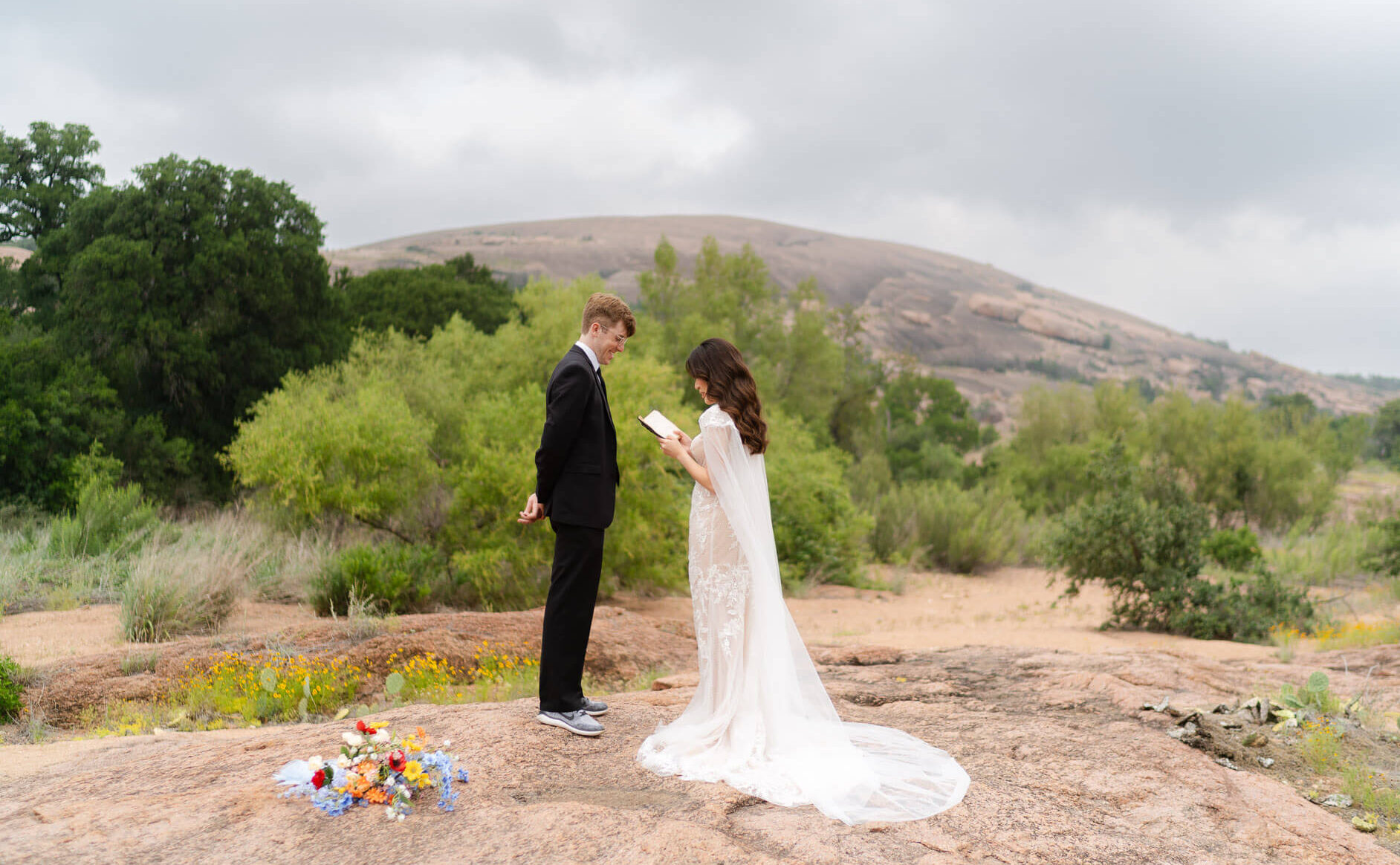Not every couple dreams of a traditional wedding aisle or ballroom. For many, an elopement ceremony means stepping into wild, beautiful spaces and sharing vows wrapped in adventure, not expectations. Whether you’re high on a mountain ridge, deep in red rock canyons, or beside an alpine lake, the script of your ceremony is unwritten—inviting you to create a moment that perfectly reflects your story and your love for the outdoors.
Ceremony Ideas That Feel Real (and Leave No Trace)
Your elopement ceremony doesn’t need to follow a strict structure — but adding a few intentional elements can help make the moment feel grounded, sacred, and truly yours.
Below are two types of ideas to draw from: creative, outdoors-focused traditions and more classic ceremony elements you can adapt for a smaller, wilder setting. Every idea here is Leave No Trace–friendly, so you can celebrate meaningfully without impacting the landscapes you came to honor. Unity rituals add meaning to your ceremony, but in wild places, they should always honor the landscape. Choose simple, personal acts that celebrate your connection and have little to no impact on the natural environment.
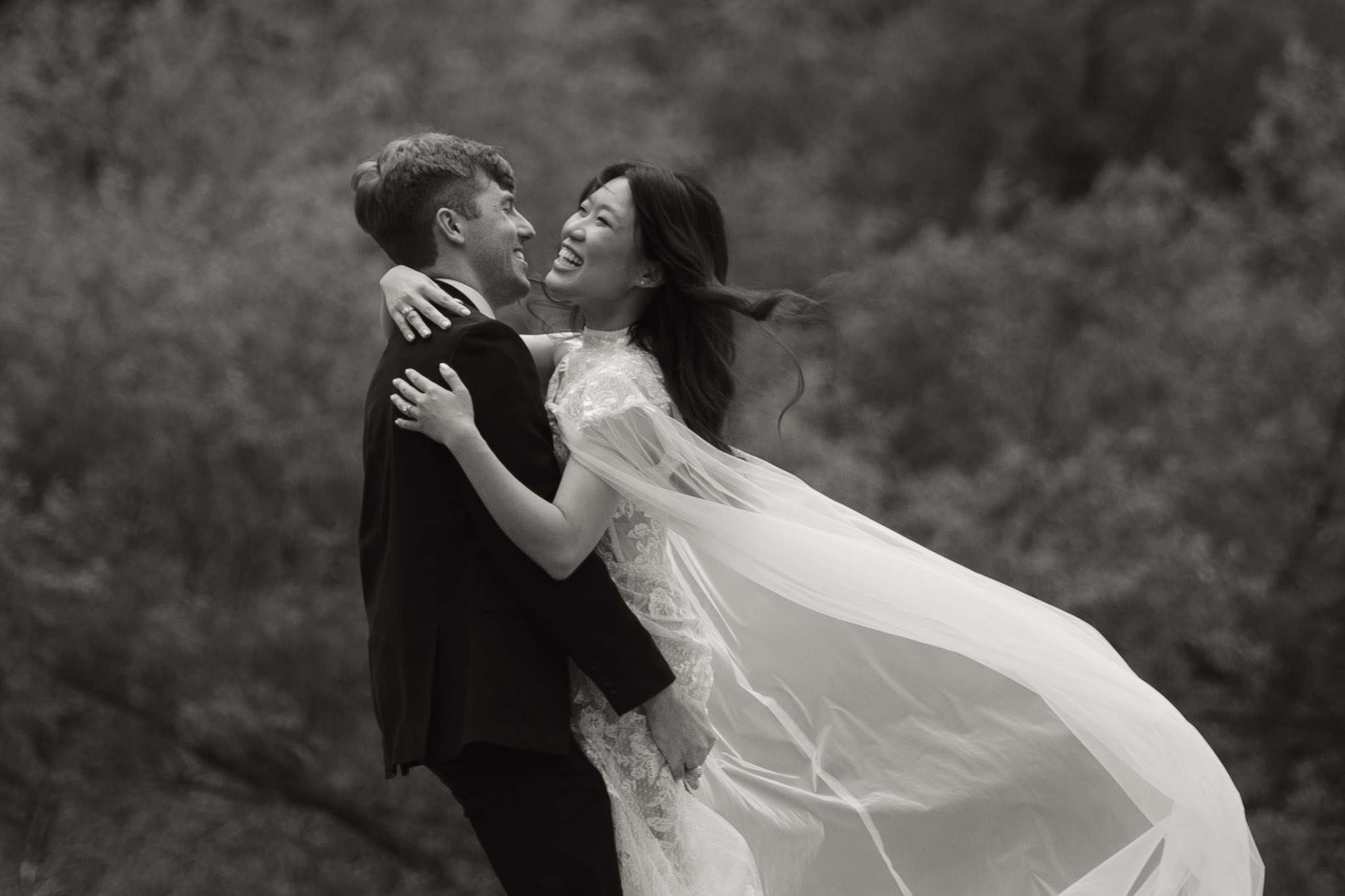
Creative and Unique Ceremony Ideas:
For couples who prefer to author their own ceremony from scratch or blend traditions with personal rituals, these ideas invite intentionality without leaving anything behind:
•Handfasting with meaningful fabric: Use a special scarf, heirloom ribbon, or woven cord to bind your hands during vows. This tactile tradition brings a sense of unity, and you’ll take the fabric home as a keepsake.
•Water blending ritual: Each partner brings water from a meaningful place and pours it together into a shared vessel. Pack everything out with you, leaving the environment exactly as you found it.
•Moment of stillness: Choose a natural pause in your ceremony to simply breathe, listen, and take in your surroundings together. It’s simple, impactful, and leaves absolutely no trace.
• Tiny vows-in-a-jar: Write private mini promises or intentions on small scrolls of paper. Place them into a sealed jar that you will take home as a keepsake. Do not leave the jar or any contents behind in nature.
•Create a shared vow journal: Instead of leaving anything in the environment, make your unity ritual an ongoing practice. Exchange or add to a shared journal during your ceremony, committing to write in it on future anniversaries.
Always avoid activities like stacking rocks, scattering petals or seeds, or leaving anything behind—even if biodegradable. These practices can harm delicate environments and disrupt natural patterns.
Classic or Traditional Ceremony Ideas With A Personal Twist:
Including traditional aspects of a ceremony doesn’t mean your day will feel scripted or stiff — it just adds a familiar rhythm that can be deeply comforting, especially for couples bringing elements of faith, heritage, or family values into the day.
•Walking in separately: Even in wild places, you or your partner can walk down a natural “aisle” (like a forest path, desert trail, or overlook). It creates a powerful sense of transition and presence.
•Giving or receiving a blessing: Invite a family member, friend, or spiritual leader to offer a blessing—in person or via a letter or audio recording.
•Opening or closing with prayer or scripture: Whether it’s a quiet prayer just between you two, or a shared reflection, this is a grounding way to begin or end your vows.
•Ring exchange: A timeless ritual that fits into any ceremony, traditional or not. You can speak short vows during the ring exchange, or simply hold hands and reflect in silence after.
•The “I Do’s” and pronouncement: If you have an officiant (or self-solemnizing), this official moment can still happen as part of your ceremony. Saying “I do” on a cliffside or trail is no less meaningful than in a chapel.
•First kiss + first steps as a married couple: Cue the happy tears — this moment always hits, whether you’ve climbed for sunrise or are tucked into trees in afternoon light.
These simple, classic traditions pair beautifully with more personalized or symbolic moments, and offer a sense of ceremony for couples who want something recognizable—even in an untraditional place.
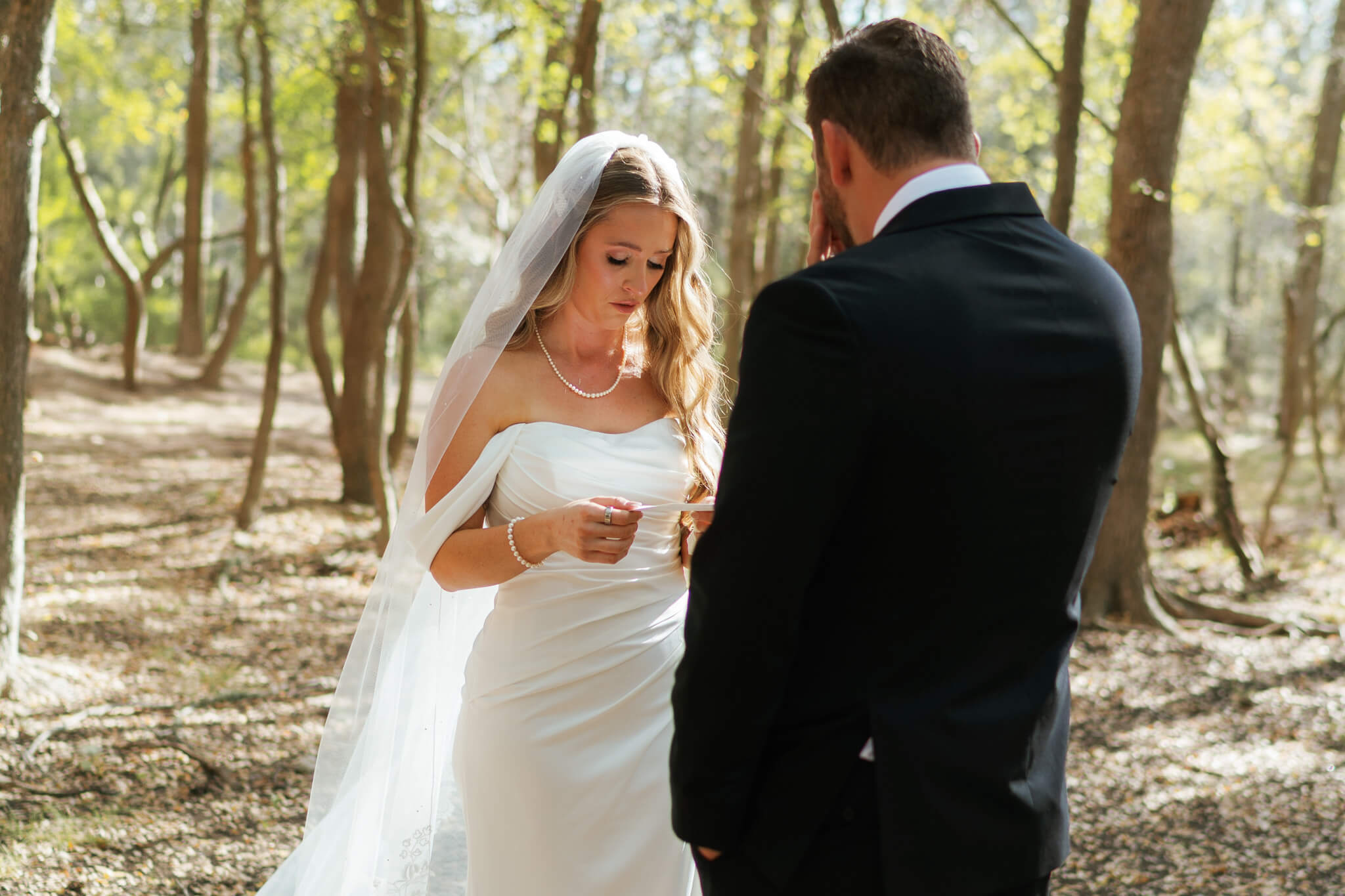
How to Write Elopement Vows That Sound Like You
At the heart of any elopement ceremony are vows that reflect your true selves. Vows at an adventure elopement are intimate, real, and need only be spoken from the heart.
•Keep it conversational: Imagine you’re sitting beside a campfire together. What would you say if nobody else were listening?
Get specific: Include quirky promises, cherished memories, and small daily rituals you share—these are the things you’ll remember most.
•Use prompts: Start with, “I love you because…” or, “I promise to…” to spark honest, simple language.
•Choose paper over screens: Write or print your vows in a small notebook, keeping the moment unplugged and present.
Elopement Ceremony Ideas for Just the Two of You
If your adventure is just the two of you, your elopement ceremony can be as private and intentional as you want. Here are a few LNT-conscious ideas:
•Read letters from home: Invite friends or family to write letters you can open during your ceremony. This lets you feel their presence without a crowd.
•Silent reflection: Take a minute together, eyes closed or open, simply soaking in the place and this milestone.
•Private toast: Pack a small bottle, drinks, or your favorite camp mugs for a celebratory toast—just be sure to pack everything out.
•First dance under open sky: Bring a lightweight speaker or sing your favorite song—nature provides the perfect setting.
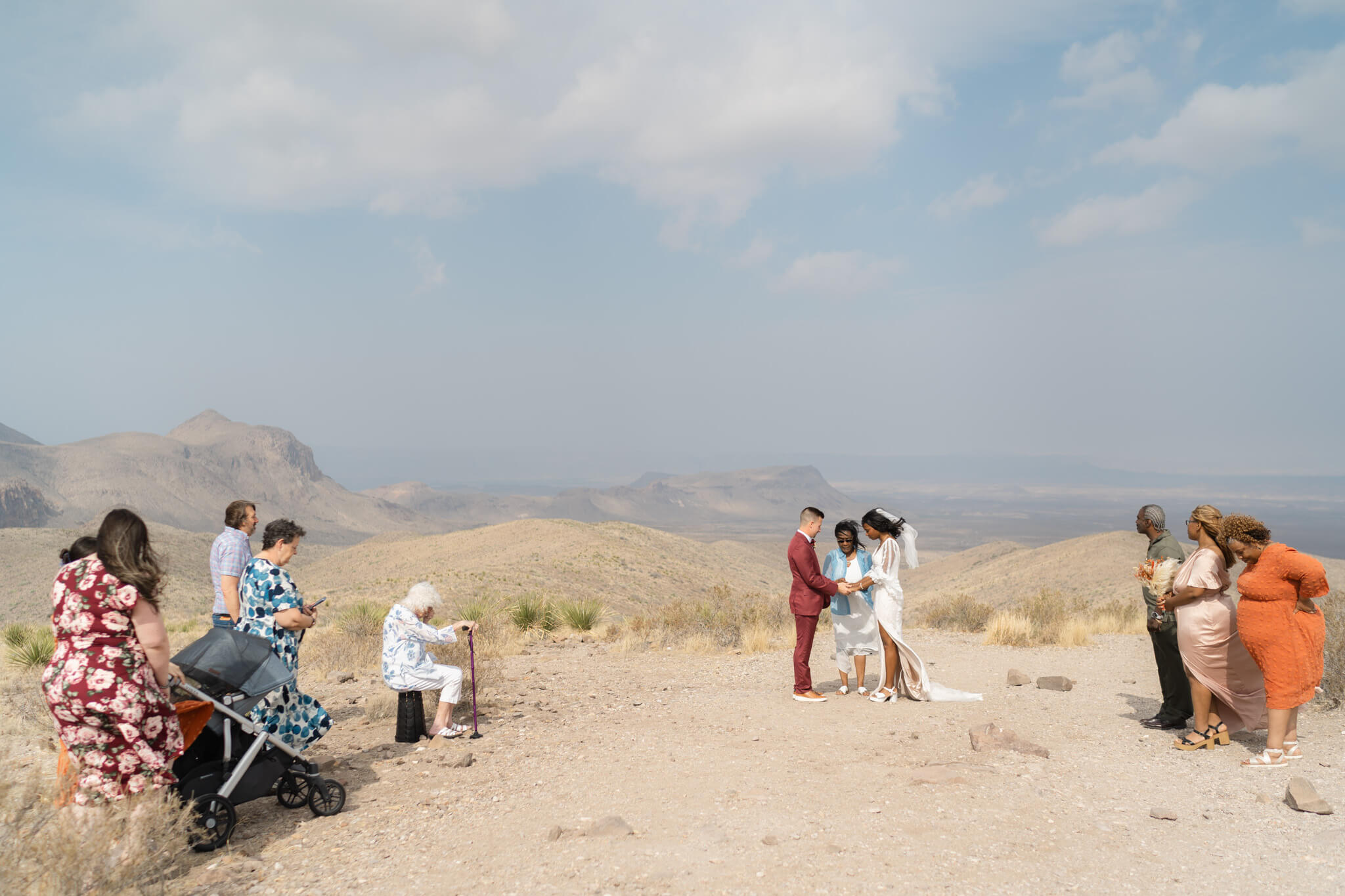
Honoring Spiritual or Religious Beliefs in Your Elopement Ceremony
Just because you’re eloping outside the walls of a church or synagogue doesn’t mean you’re leaving your faith behind. For many couples, faith plays a central role in their relationship—and incorporating meaningful spiritual elements into your elopement ceremony can make the moment even more sacred.
Whether your beliefs come from a particular religious tradition or a more personal sense of spirituality, eloping gives you the freedom to include what holds meaning for you, without needing permission or following a set script.
Ideas to authentically include your faith:
•Begin your ceremony with prayer — spoken aloud, silently held, or even read by a loved one.
•Include scripture or sacred readings that speak to your marriage, devotion, or purpose.
•Ask someone close to you—like a parent, pastor, or mentor—to bless the ceremony before or after (in person or in writing).
•Carry symbolic items such as a cross, heirloom Bible, or prayer cloth that can be part of your vow exchange or unity ritual.
•Consider playing a psalm, hymn, or instrumental version of a worship song during your first dance, rings, or vow exchange.
•Take Communion or share a small ritual, like washing one another’s hands or feet as a symbol of servanthood and love.
As someone who values faith personally, I believe there’s something incredibly powerful about merging your religious beliefs with your connection to the outdoors—celebrating your marriage not just to each other, but before the God who created the landscape around you.
If you’re not sure how to bring your spiritual identity into a non-traditional setting, I can help you create space for it in a way that feels natural, intimate, and true to your heart.
Thinking About Self-Solemnization Elopement Ceremony (Especially in Colorado)
Colorado is one of the few states where you can legally marry yourselves with no officiant or witnesses—just sign your license, seal the deal. If you’re eloping in Colorado, this might sound like a dream (and for some couples, it totally is).
But here’s something I’ve noticed: when there’s no one to help hold space or guide the moment, it’s really common for couples to feel a little… uncertain.
The beauty of self-solemnization is freedom. The challenge is not always knowing when or how to start, and it sometimes creates an awkward “So, do we just… begin?” energy.
I’ve supported couples through symbolic ceremonies in these moments, gently guiding the flow—from when to share vows, to how to exchange rings, to adding a simple ritual like a moment of silence or a first dance.
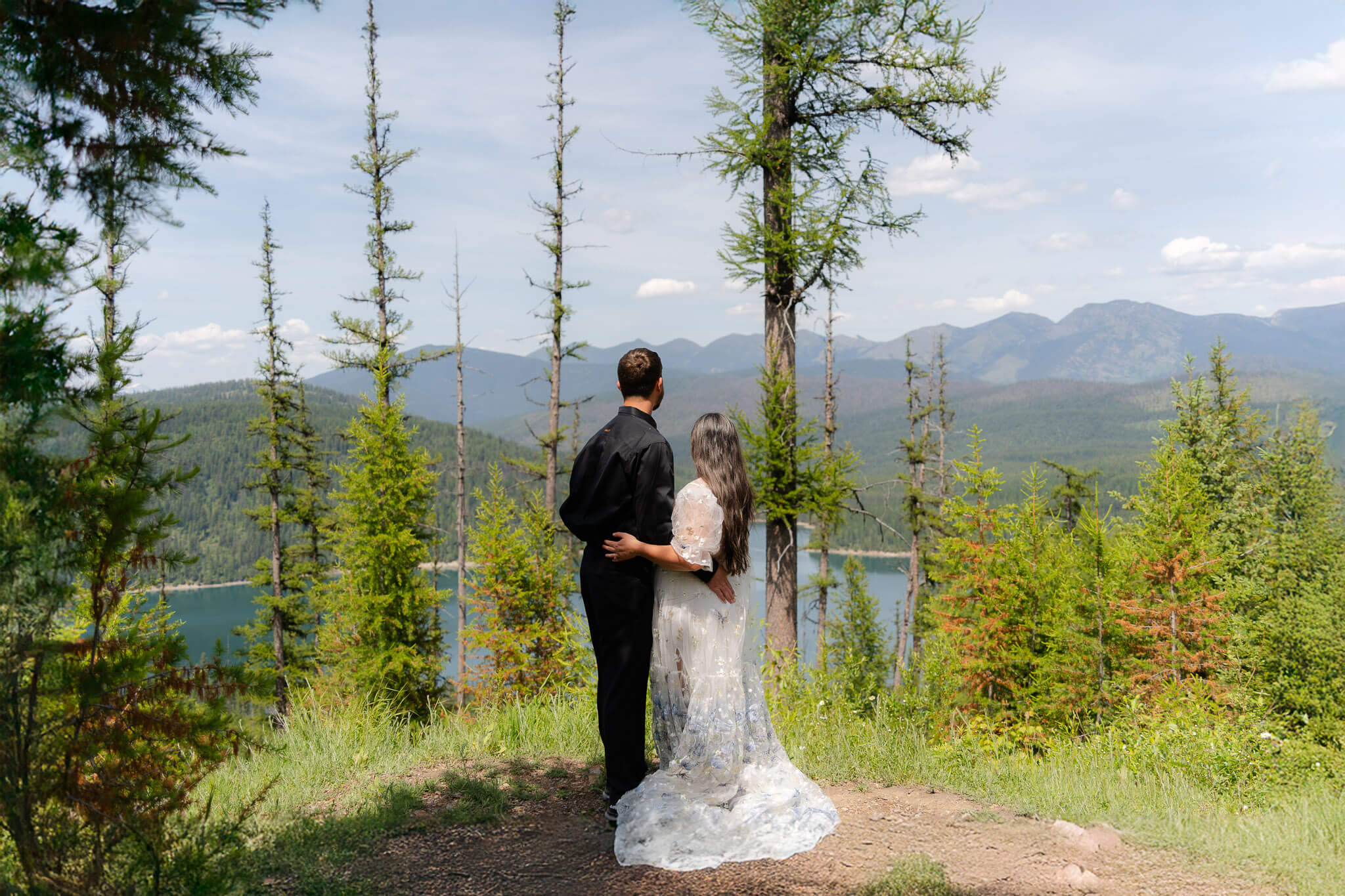
If you still want your ceremony to be private but structured, here are a few meaningful options:
•Have a friend or family member officiate symbolically, even if you sign the license yourselves earlier or later.
•Let your photographer gently guide the flow—I’ve helped many couples transition naturally through their vows with emotional ease.
•Write a simple structure into your vow books, like who speaks first, when to exchange rings, and any rituals you want to include.
You don’t need a crowd to make it feel sacred—but a little guidance can help make it flow naturally and memorably.
Including Guests (Without Losing Intimacy—or Leaving a Trace)
If you’ll have a few trusted guests, you can still protect the environment and keep the day deeply personal.
•Keep the group small: Many parks or public lands require a permit and limit group sizes for elopement ceremonies.
•Ask a loved one to officiate: In many states, it’s straightforward for a close friend or relative to become ordained just for your day.
•Invite reading or shared advice: Guests can offer short readings, blessings, or even a shared moment of silence.
•Educate your guests: Share Leave No Trace principles before the day, and encourage everyone to stay on trails, pack out trash, and leave each place better than they found it.
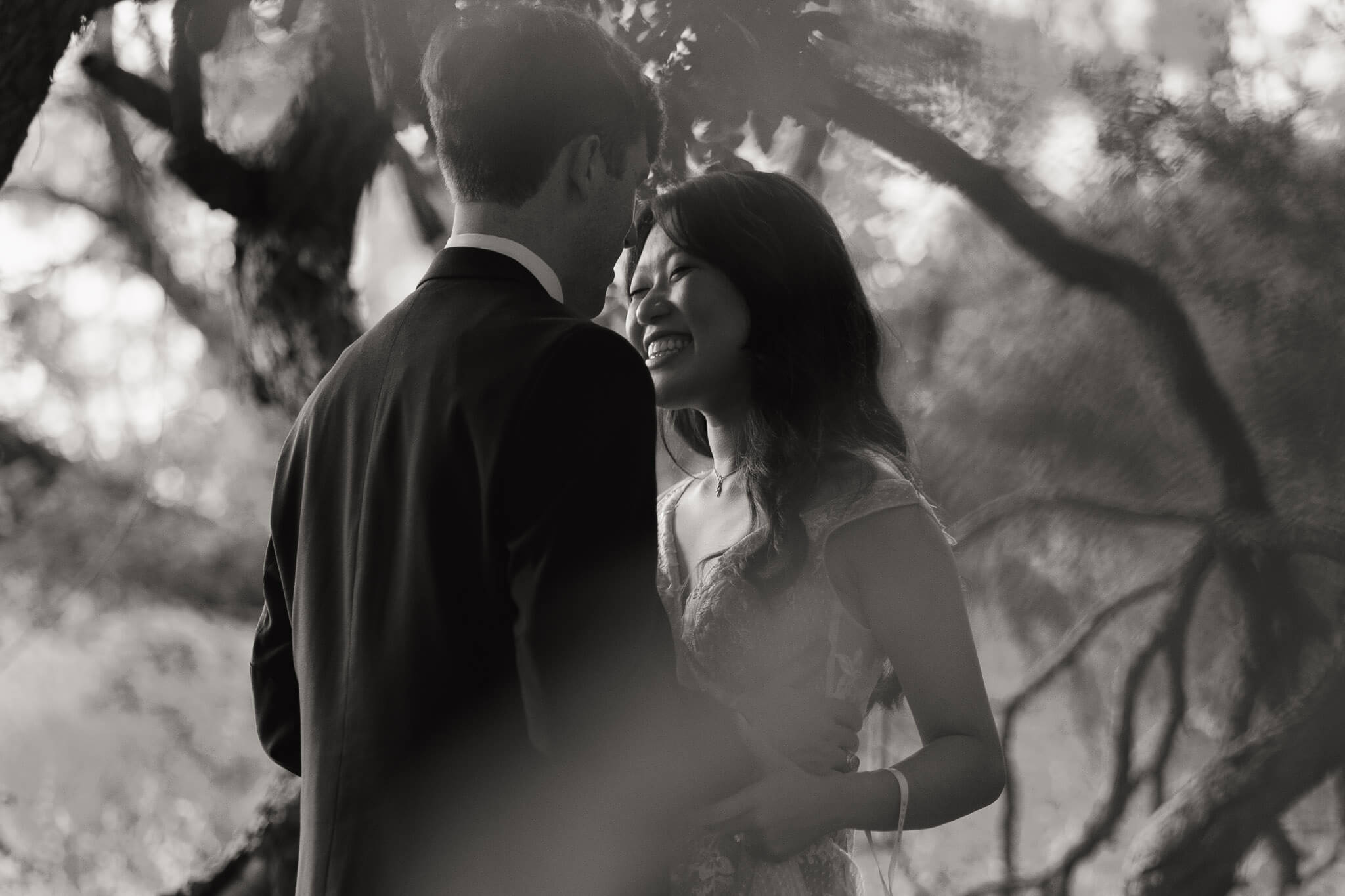
More Than a Elopement Ceremony: A Full-Hearted, LNT-Friendly Experience
One of the greatest gifts of adventure elopements is a day that flows from sunrise coffees to sunset hikes and stargazing. You can design your timeline around your favorite ways to connect—with nature, and with each other.
•Get ready at a cozy cabin, campground, or van: This keeps the getting-ready moments private and eco-conscious.
•Celebrate with a picnic or chef-crafted meal: Choose low-impact, reusable dishware and pack out every scrap.
•Plan sunrise or sunset adventures: These times offer softer light, fewer crowds, and a deeper sense of wild intimacy.
•End with stargazing: Let nature set the stage for your celebration.
Create a Ceremony That’s Rooted in Meaning—Not Rules
In the end, your elopement ceremony doesn’t need to follow any predefined format. Whether you’re blending long-held traditions, quiet spiritual rituals, or completely unstructured moments of presence, it should feel real, honest, and reflective of who you are as a couple.
As your adventure elopement photographer, I’m not just here to document the day—I help guide the flow of your ceremony, offer gentle direction when needed, and hold space so you can be fully present in every moment.
This is your permission to toss out the script—and instead create something sacred under open skies, on your terms, and in a way that honors both your love and the land you stand on.
Elopement Timeline Ultimate Guide: Half, Full & Multi-Day Ideas





